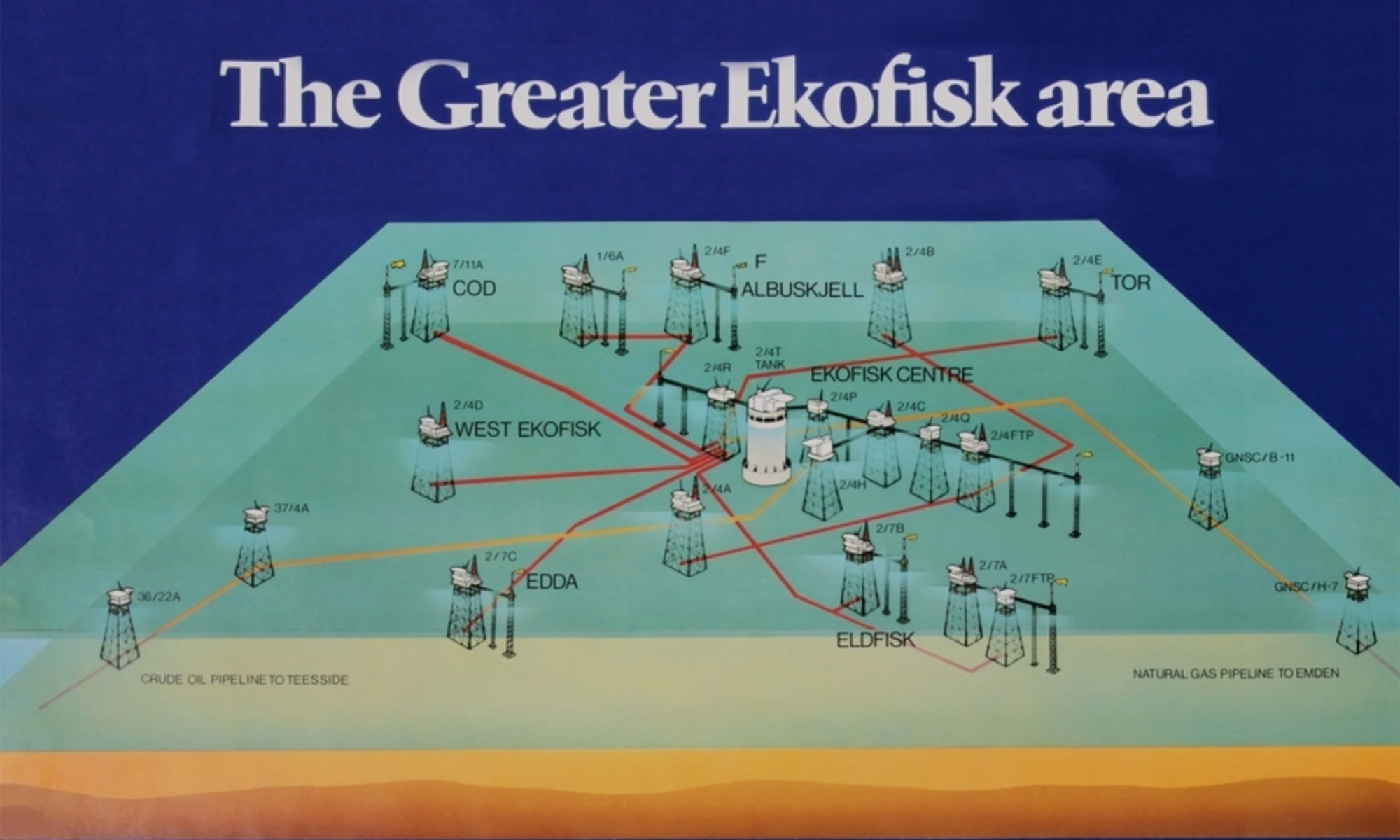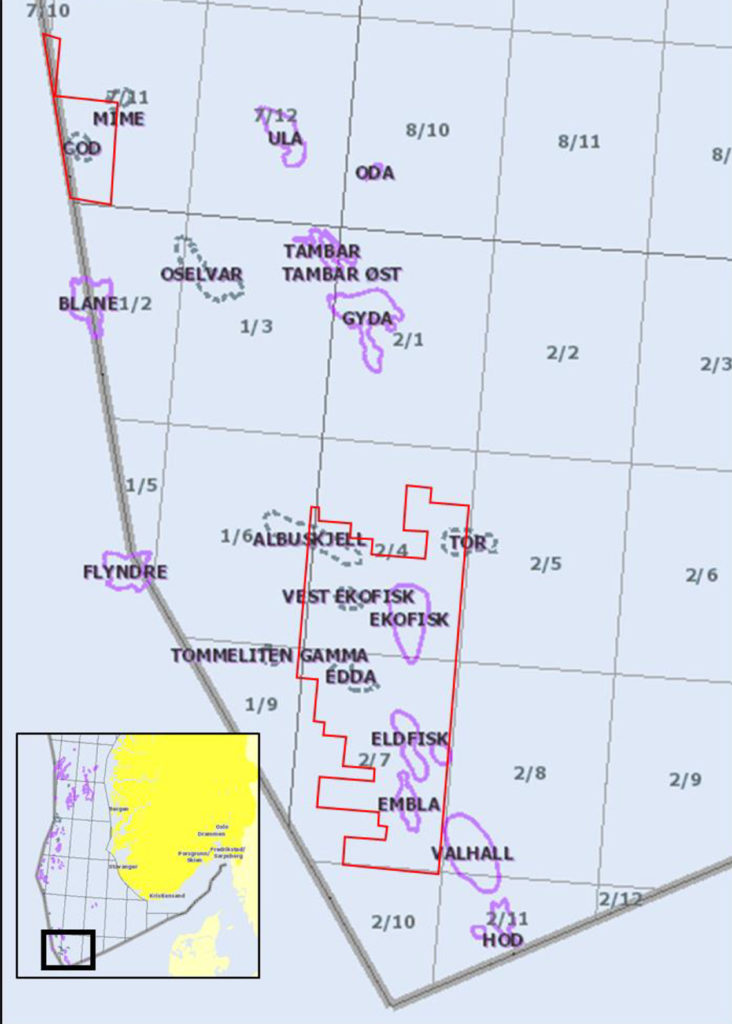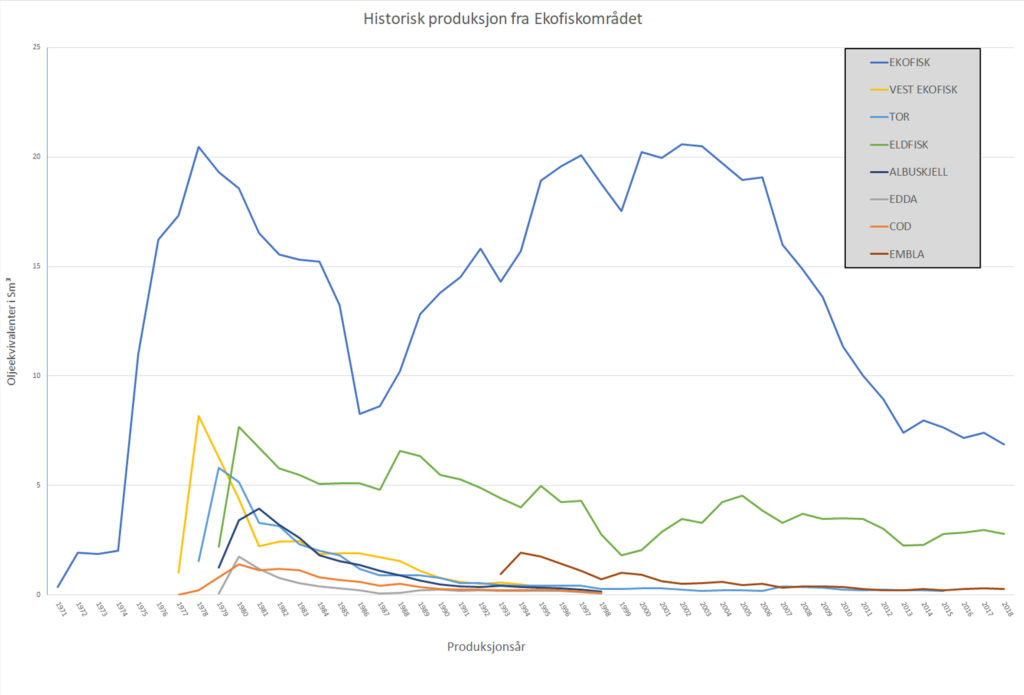What’s in a name


Primarily located in production licence PL 018, along with Ekofisk, the other seven fields are West Ekofisk, Tor, Eldfisk, Albuskjell, Edda, Cod and Embla.
Furthermore, six of the eight – with Embla and Cod as the exception – comprise two geological formations. One is known as the Ekofisk formation, with the Tor formation as the other. See the article on sea scurf.
The graph in figure 2, which presents collective production of oil, gas and condensate over time in million standard cubic metres of oil equivalent (scm oe), shows Ekofisk’s dominant position – both historically and today.

With the exception of four years, overall output from the seven other fields has never achieved the same volume as Ekofisk’s own production.
The effect of waterflooding on Ekofisk, which got going seriously in 1987, can be clearly seen in the production curve. This rose from less than 10 million scm oe per annum to more than 20 million.
On 1 July 2019, operator ConocoPhillips submitted a plan for development and operation (PDO) which covered reopening the Tor field (Tor II).
This will involve the investment of about NOK 6 billion, with a planned production start in late 2020, and is expected to yield an estimated 10 million scm oe.
Furthermore, the licensees have initiated concept studies for further development of the northern flank of Eldfisk (Eldfisk II). Both subsea solutions and a simple unmanned platform are under consideration.[REMOVE]Fotnote: https://petro.no/nyheter/conocophillips-vurderer-a-bygge-ny-plattform-pa-eldfisk-nord
Development of the Tommeliten Alpha formation, which has only ranked as a discovery so far, is also being assessed.[REMOVE]Fotnote: https://petro.no/nyheter/forbereder-mulig-utbygging-tommeliten-alpha

When some one searches for his necessary thing, therefore he/she wants to be available that in detail, thus
that thing is maintained over here.
Great article! We will be linking to this particularly great post on our
website. Keep up the great writing.
I am actually grateful to the owner of this
site who has shared this enormous paragraph at at this place.
Howdy just wanted to give you a quick heads up. The words in your post seem to be running off the screen in Ie.
I’m not sure if this is a format issue or something to do with web browser
compatibility but I thought I’d post to let you know. The style
and design look great though! Hope you get the issue resolved soon. Kudos
Howdy! I just wish to give you a big thumbs up for your excellent info you have here
on this post. I will be coming back to your blog for more soon.
I’m really impressed along with your writing talents and also with the layout on your weblog.
Is that this a paid subject matter or did you modify it your self?
Anyway keep up the nice high quality writing,
it’s uncommon to see a great blog like this one these days..